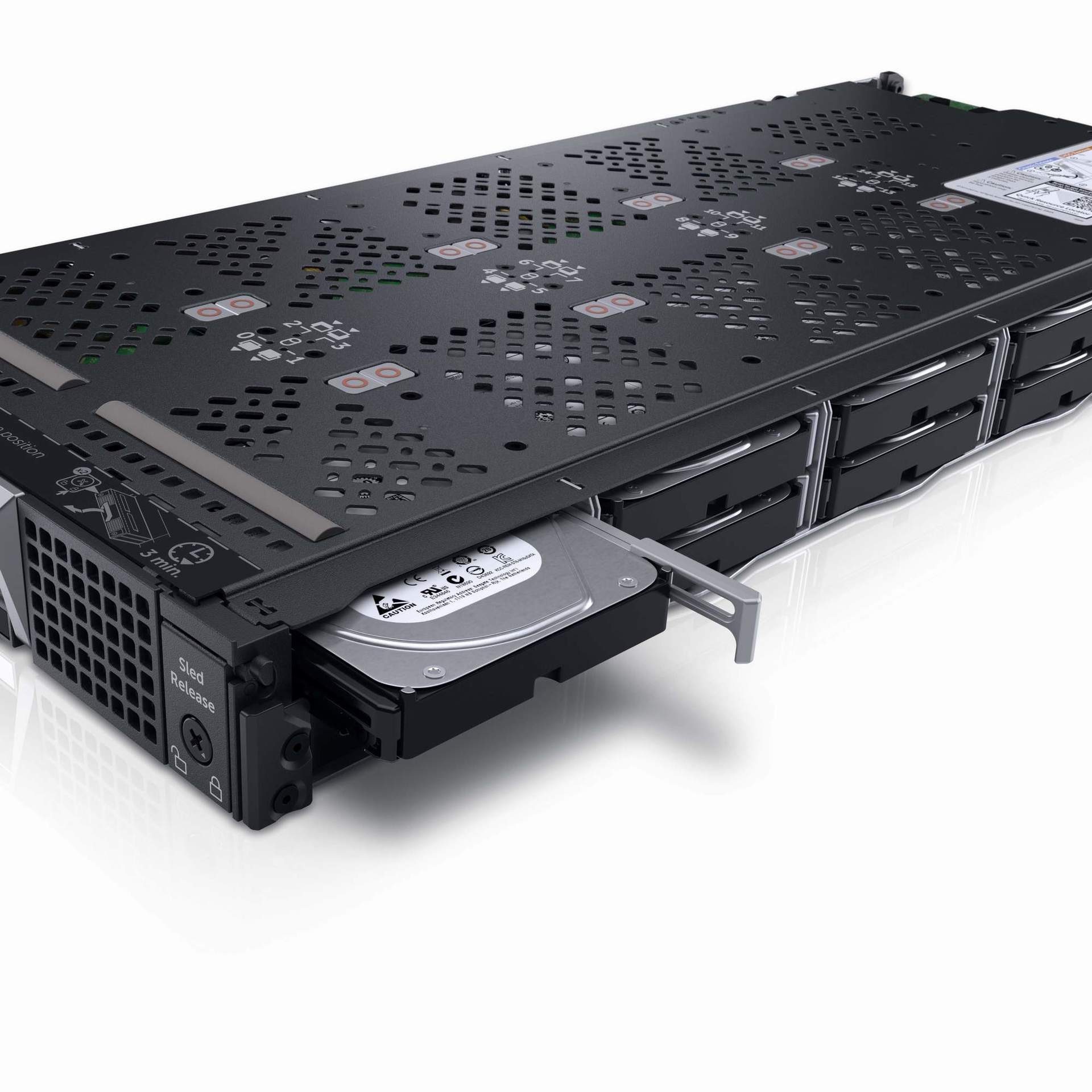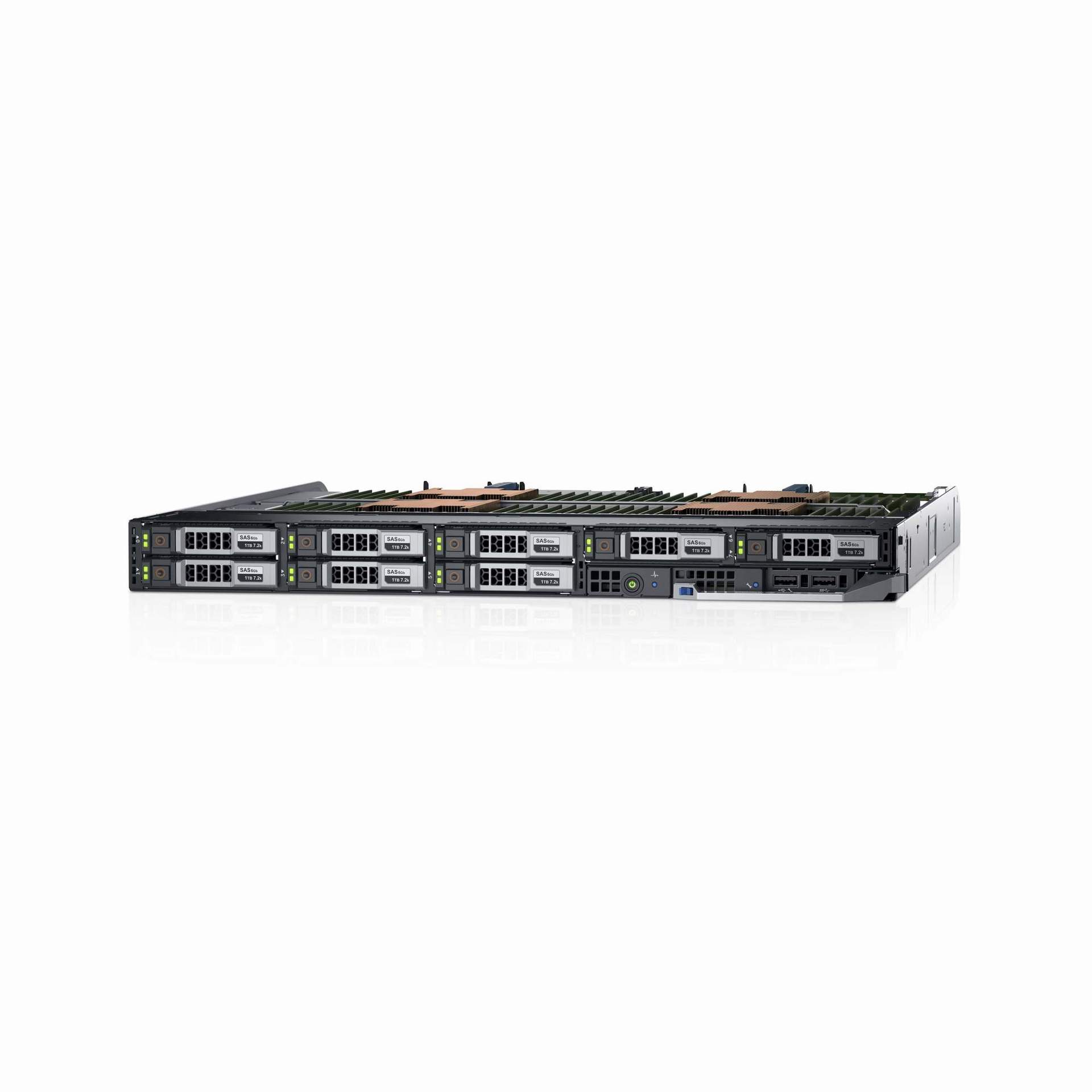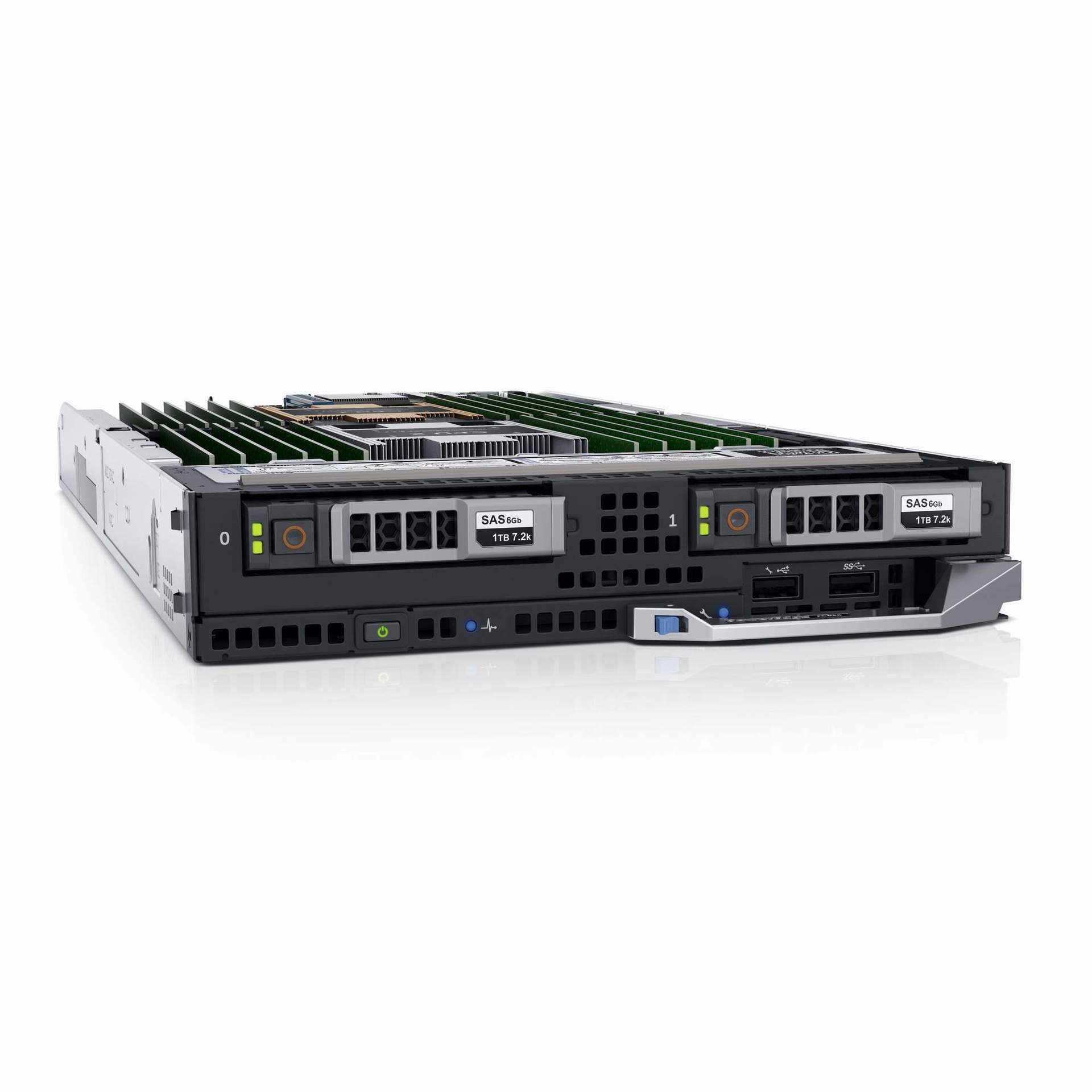FX Architecture: a revolution for data convergence
The flexibility of computing systems and storage systems has allowed to radically change the convergent space, and FX allows you to make an even greater revolution. Being one of the first converged infrastructures with the ability to control rack and blade servers, FX breaks down the barriers that previously kept users from working in a hyper-dense convergent space.

The FX architecture consists of several elements: a PowerEdge FX2 chassis in a 2U form factor; powerful servers for significant performance and density scaling; Direct-connect, half-width data storage units designed specifically for the FX platform, and I / O aggregators to optimize network performance.
The FX2 modular rack-mount chassis in the 2U form factor allows you to tailor any computing environment to your needs, freely installing compact IT modules, including servers, storage, and I / O subsystems. You can easily and quickly scale resources to meet the needs of your business. To help improve IT productivity and prevent business downtime, Dell EMC has updated its systems management portfolio for the FX2 modular infrastructure.

')
Updates improve user productivity by simplifying the allocation of resources for virtualized workloads, Nagios user plugins, a complete overview of the state of the infrastructure, and the flexibility to run open source applications. Thus, PowerEdge FX2 can help customers achieve their goals by supporting traditional applications and new workloads caused by the introduction of social, mobile, analytical technologies and cloud computing in a modular infrastructure. Using PowerEdge FX2 and Dell EMC system management software, customers in 70 countries take advantage of integrated server building blocks, storage, and networking to help them achieve the flexibility and efficiency of data centers without the need to capitalize on existing infrastructure.
If you have a large data center where you need to work with a wide range of applications and virtualization environments, then the powerful full-width four-processor server module FC830 in the 1U form factor will suit you. This server has a high density of computing resources, scalable memory and a storage subsystem with exceptional expansion options.

The FC630 is a 1U half-width server module. This option is optimal for hosting virtualization environments or running business intelligence applications, databases and private clouds. Even more compact, the FC430 has a quarter-rack width and provides the perfect combination of performance, memory and high-speed I / O for standard corporate workloads, including virtualization environments and medium-sized databases.
The architecture also includes the half-width modules FD332 and FM120x4. FD332 can contain up to 16 small form factor drives (SFF) with direct connection. In combination with servers on the FX platform, the FD332 modules provide a universal solution with the possibility of horizontal scaling. FM120x4 supports up to 16 microservers per FX2 chassis, providing a cost-effective high-density solution, ideal for web services, dedicated hosting and simplified analytics.
Especially for PowerEdge FX2 also developed input / output module FN (FN IOM). The FX2 modular infrastructure supports up to two FN I / O modules per chassis and includes up to eight internal 10GbE ports, as well as cooling fans and redundant power supplies.

The FX architecture creates a new level of versatility for data centers. Advanced management technologies and modular infrastructure simplify the deployment and operation of data centers and a private cloud. You can easily and quickly scale resources in accordance with the needs of workloads and your business, adapting the infrastructure to suit your business objectives.

The unprecedented density of IT infrastructure with a large number of services and with fewer resources allows you to reduce overall costs and improve the performance of loads. It also leads to increased performance of important business applications, from business intelligence to demanding high-performance computing (HPC), stable support of private cloud services, databases and virtualization environments. The FX architecture allows enterprises to grow more efficiently by simplifying the allocation and management of data center resources. IT managers will be able to more effectively meet the complex business trends and respond to unpredictable workloads.
The flexibility of FX gives your business unlimited growth potential; with this architecture, your business will receive powerful support from Dell's latest EMC computing, storage, and virtualization systems.
The FX architecture consists of several elements: a PowerEdge FX2 chassis in a 2U form factor; powerful servers for significant performance and density scaling; Direct-connect, half-width data storage units designed specifically for the FX platform, and I / O aggregators to optimize network performance.
Efficient modular infrastructure management
The FX2 modular rack-mount chassis in the 2U form factor allows you to tailor any computing environment to your needs, freely installing compact IT modules, including servers, storage, and I / O subsystems. You can easily and quickly scale resources to meet the needs of your business. To help improve IT productivity and prevent business downtime, Dell EMC has updated its systems management portfolio for the FX2 modular infrastructure.
')
Updates improve user productivity by simplifying the allocation of resources for virtualized workloads, Nagios user plugins, a complete overview of the state of the infrastructure, and the flexibility to run open source applications. Thus, PowerEdge FX2 can help customers achieve their goals by supporting traditional applications and new workloads caused by the introduction of social, mobile, analytical technologies and cloud computing in a modular infrastructure. Using PowerEdge FX2 and Dell EMC system management software, customers in 70 countries take advantage of integrated server building blocks, storage, and networking to help them achieve the flexibility and efficiency of data centers without the need to capitalize on existing infrastructure.
From Small to Great: Components of FX Architecture
If you have a large data center where you need to work with a wide range of applications and virtualization environments, then the powerful full-width four-processor server module FC830 in the 1U form factor will suit you. This server has a high density of computing resources, scalable memory and a storage subsystem with exceptional expansion options.
The FC630 is a 1U half-width server module. This option is optimal for hosting virtualization environments or running business intelligence applications, databases and private clouds. Even more compact, the FC430 has a quarter-rack width and provides the perfect combination of performance, memory and high-speed I / O for standard corporate workloads, including virtualization environments and medium-sized databases.
The architecture also includes the half-width modules FD332 and FM120x4. FD332 can contain up to 16 small form factor drives (SFF) with direct connection. In combination with servers on the FX platform, the FD332 modules provide a universal solution with the possibility of horizontal scaling. FM120x4 supports up to 16 microservers per FX2 chassis, providing a cost-effective high-density solution, ideal for web services, dedicated hosting and simplified analytics.
Especially for PowerEdge FX2 also developed input / output module FN (FN IOM). The FX2 modular infrastructure supports up to two FN I / O modules per chassis and includes up to eight internal 10GbE ports, as well as cooling fans and redundant power supplies.
Customer Benefits of FX Architecture
The FX architecture creates a new level of versatility for data centers. Advanced management technologies and modular infrastructure simplify the deployment and operation of data centers and a private cloud. You can easily and quickly scale resources in accordance with the needs of workloads and your business, adapting the infrastructure to suit your business objectives.
The unprecedented density of IT infrastructure with a large number of services and with fewer resources allows you to reduce overall costs and improve the performance of loads. It also leads to increased performance of important business applications, from business intelligence to demanding high-performance computing (HPC), stable support of private cloud services, databases and virtualization environments. The FX architecture allows enterprises to grow more efficiently by simplifying the allocation and management of data center resources. IT managers will be able to more effectively meet the complex business trends and respond to unpredictable workloads.
The flexibility of FX gives your business unlimited growth potential; with this architecture, your business will receive powerful support from Dell's latest EMC computing, storage, and virtualization systems.
Source: https://habr.com/ru/post/318310/
All Articles